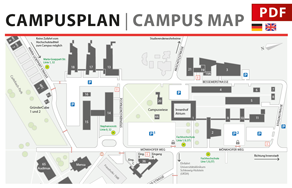KI-5G
AI-based Ressource Allocation for private 5G Networks
| Duration: | 01.03.2021 - 30.06.2024 |
| Project-Leader: | Prof. Dr.-Ing. Horst Hellbrück |
| Staff: | Dipl.-Ing. Fabian John, Domenic Hampf B.Sc.; formerly (Ole Sellhorn, M.Sc.) |
Background
AI is a key technology that has the potential to have a lasting impact on and change entire industries.
The "Smart Service Welt" innovation report shows that mobile and dynamic wireless networks are being used more and more in industry and medical care in order to react quickly to changing environmental parameters. One new approach is the 5G mobile network, which also provides for local installations, so-called private 5G networks. In addition to the frequency bands, as with LTE, in the range from 600MHz to 6GHz, 5G also opens up completely new frequency bands above 24GHz with new challenges. The complex tasks and dynamic network configurations place increased demands on performance, reliability and the distribution of available communication resources. The use of AI methods is therefore a way of not only distributing communication resources better, but also making the highly dynamic system more reliable.
Objective
The objective of the project is to optimise private 5G networks with AI solutions so that the dynamic system behaviour is improved by AI-enriched transmission protocols and reliability is increased.
Approach
Resource allocation through established allocation algorithms (e.g. a division of the time or frequency range, through distinguishable codes or location-dependent) can be optimally tailored to the requirements of 5G applications with the help of AI algorithms. AI solutions have not yet been used in mobile networks. Preliminary investigations have shown that AI methods are suitable for estimating or predicting process sequences in advance. This makes it possible to start critical processes in a more targeted manner if required and to optimise communication. The effectiveness of this support is being demonstrated in a test field in Schleswig-Holstein.
Results

5G SA indoor Testbed
To investigate AI algorithms in 5G networks, we have set up a private 5G standalone (SA) network at the CoSA at the Technische Hochschule Lübeck. Our system is based on open source software, standard PC hardware components and software defined radios (SDR).
We have documented the construction of our private 5G SA network in detail (GIT repository) and our paper on the reference deployment of a minimal open source 5G SA system was presented and published at the ICICN conference in Zhangye 2022[1]. In our indoor 5G testbed, we are exploring new algorithms for efficient resource allocation in 5G networks, demonstrating 5G applications, testing new 5G devices and transferring our 5G knowledge to industry and education. You can find an overview of the equipment in our 5G Lab in the following table:
Hardware | ||
Typ | Device | Quantity |
Software-Defined-Radio | N310 | 2 |
| X300/310 | 1/1 | |
| B210 | 2 | |
| B205 mini | 4 | |
Desktop PC | Fujitsu Siemens 6-Core CPU | 2 |
| ROG Intel i712900KS 8-Core CPU | 2 | |
| HP Z4 Intel i7 4-Core CPU | 2 | |
5G system | Amarisoft Callbox | 1 |
| Mecsware | 1 | |
5G end devices | Google Pixel 4a 5G | 1 |
| Samsung Galaxy S21 | 1 | |
| Quectel RM500Q-GL | 4 | |
| Simcom Modem | 4 | |
| ||
Software | ||
5G-Core | OpenAirInterface | |
Open5GS | ||
RAN | OpenairInterface | |
SRSRan | ||
| [1] A Reference Deployment of a Minimal Open-Source Private Industry and Campus 5G Standalone (SA) System (PDF - Authors Manuscript) Fabian John and Jörg Schuljak and Lars B. Vosteen and Björn Sievers and Andreas Hanemann and Horst Hellbrück ICICN 2022: Zhangye, 1--9, 2022. |
| [2] Practical Security Analysis and Measures for 5G Private Industrial Standalone (SA) Deployments Lars Vosteen, Fabian John, Jörg Schuljak, Björn Sievers, Andreas Hanemann, and Horst Hellbrück 26. VDE/ITG Fachtagung Mobilkommunikation, Osnabrück, Deutschland, 1--6, 2022. |



